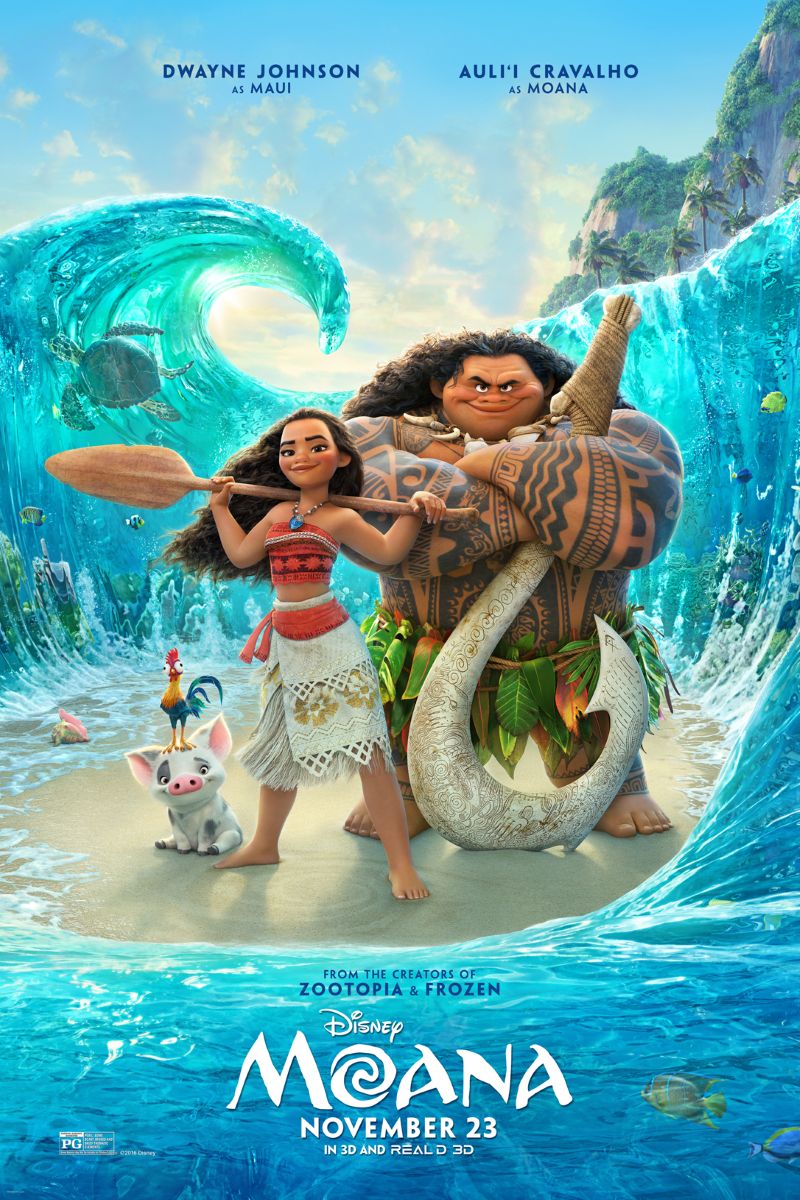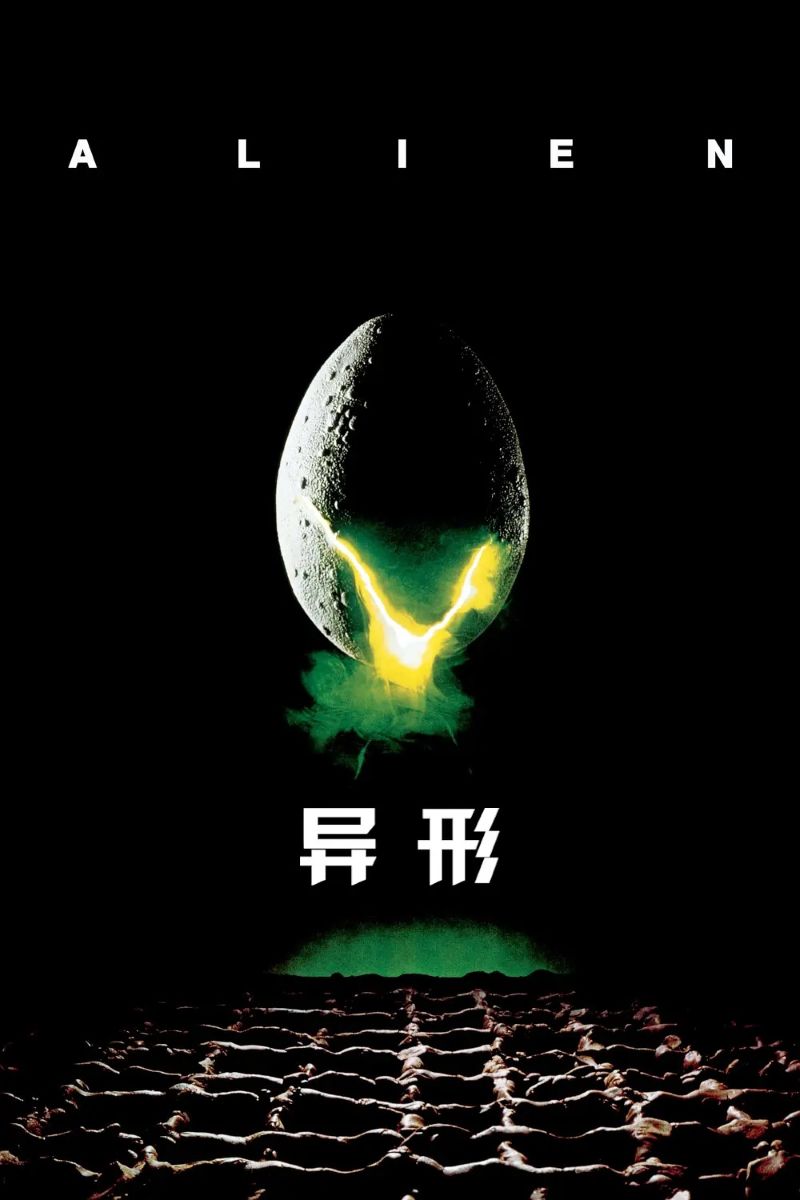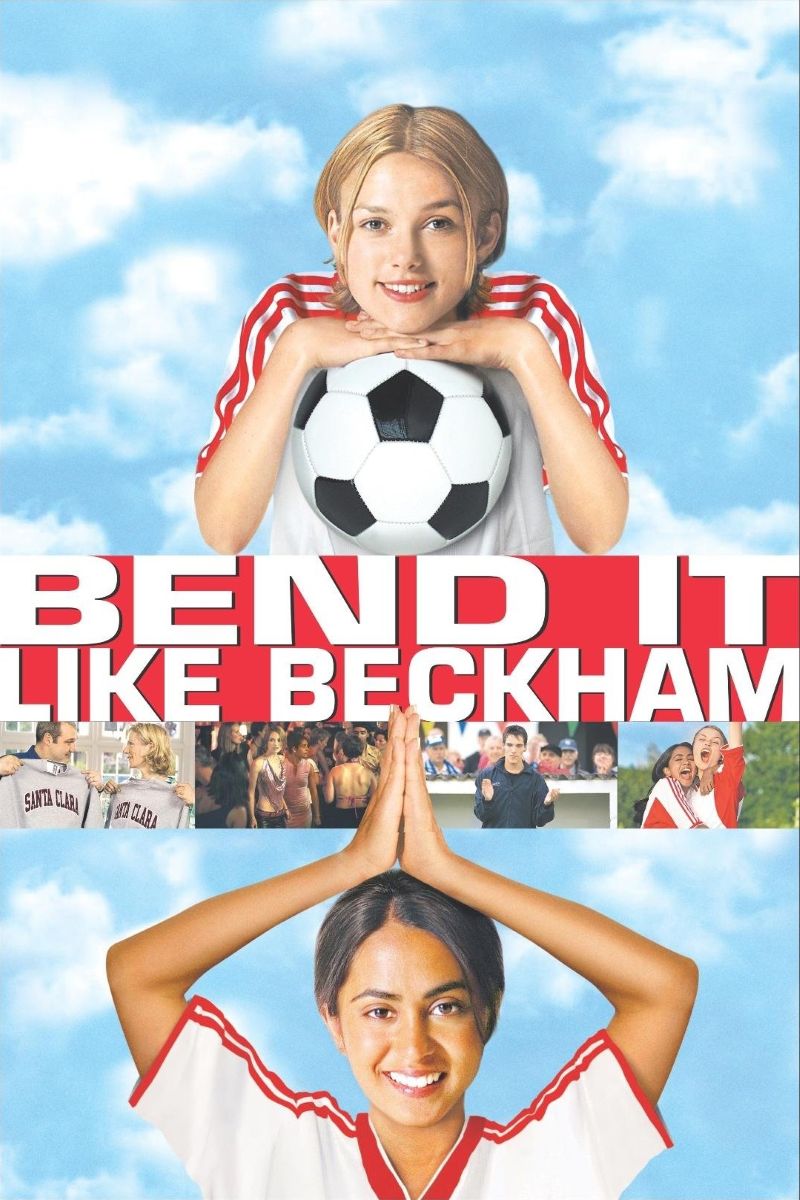
Moana
Moana
Disney's 2016 animated masterpiece tells the adventure story of Polynesian teenager Moana who saves her homeland. Voiced by Auli'i Cravalho, this film breaks from traditional Disney princess formulas with no romantic subplot, focusing instead on themes of female empowerment, cultural identity, and environmental protection.
Cast
Related Topics
🎥 Film Analysis & Review
In Disney’s century-long animation history, “Moana” emerges like a fresh Pacific breeze, completely redefining what it means to be a “Disney princess.” This 2016 masterpiece, co-directed by Ron Clements and John Musker, stands as Disney’s first princess film without a romantic subplot, representing both a profound tribute to Polynesian culture and a modern interpretation of feminism. Through the oceanic adventure of 16-year-old Moana (voiced by Auli’i Cravalho), the film explores profound themes of identity, environmental responsibility, cultural preservation, and female leadership, establishing itself as one of the most significant animated works of the 21st century.
Beyond Romance: Redefining Princess Narratives
“Moana’s” most revolutionary achievement lies in its complete abandonment of the core Disney princess formula—the search for true love. Moana’s journey is not about finding a prince or achieving marriage; it’s about saving her island and people. This narrative choice carries profound feminist significance, telling young audiences that women’s value and achievements need not be defined through relationships with men.
Director John Musker explained their intention to create “a story with no romance, focused on female empowerment, with qualities like ‘True Grit’—a strong-willed girl partnering with a past-his-prime guy. They go on adventures, she finds her true calling—and saves the world in the process.” This setup makes Moana the absolute protagonist of her own story, not anyone’s supporting character.
Moana’s character development completely subverts the traditional passive princess image. She actively chooses to set sail, doesn’t retreat from danger, and demonstrates wisdom and courage beyond her years when facing difficulties. She doesn’t need to wait for rescue—she is the rescuer; she doesn’t need to be chosen—she actively accepts responsibility. This portrayal of agency provides young female audiences with an entirely new role model.
The Ocean as Symbol of Female Power
In “Moana,” the ocean serves not merely as backdrop but as a conscious, emotional character that chooses Moana to bear the mission of saving the world. The personification of the ocean carries deep feminist implications—it functions simultaneously as a maternal protector and stern challenger, both gentle and powerful, both inclusive and resolute.
The process by which the ocean chooses Moana is rich with symbolic meaning. When she was still an infant, the ocean recognized her qualities, suggesting women’s innate intuition and wisdom. The ocean’s interaction with Moana is also distinctive—it doesn’t command her but guides her to discover her own power. This collaborative relationship embodies the equal partnerships emphasized in feminism rather than hierarchical systems.
The ocean’s characterization is particularly noteworthy. It has its own personality, can be “angry,” “playful,” and “encouraging.” This personification makes the ocean Moana’s spiritual ally, appearing when she most needs support. This relationship transcends the opposition between humanity and nature, embodying ecofeminist ideals—humans, particularly women, should coexist harmoniously with nature.
Cultural Identity and Decolonizing Narrative
“Moana’s” presentation of Polynesian culture represents one of Disney’s most serious cultural research efforts in history. The production team traveled to Fiji, Samoa, and Tahiti for field research, invited Polynesian cultural experts as consultants, and launched the “Oceanic Story Trust” to ensure accurate and respectful cultural representation.
Cultural elements in the film are not decorative but central to the narrative. Moana’s grandmother Tala (voiced by Rachel House) plays a crucial role as cultural transmitter. By telling stories of ancestral navigation, she awakens Moana’s longing for the ocean and awareness of cultural identity. This transmission of elder women’s wisdom reflects the important position of women in Polynesian culture.
The film’s portrayal of seafaring culture carries particular decolonizing significance. Western narratives have long ignored or belittled the navigational skills and cultural achievements of Pacific Island inhabitants. “Moana” corrects these historical biases by showcasing Polynesian maritime wisdom, celebrating the great achievements of indigenous culture.
Deep Expression of Ecofeminism
“Moana’s” environmental themes are closely connected to feminism, embodying core ecofeminist concepts. The story of Te Fiti—whose stolen heart causes life force to wither—serves as a powerful metaphor for environmental destruction. That only a woman (Moana) can heal this trauma suggests the special connection between women and nature.
The crisis facing Moana’s island—dying plants, disappearing fish—reflects contemporary environmental issues, particularly climate change threats to Pacific island nations. Through a teenage girl’s adventure story, the film conveys the urgency of environmental protection and the importance of individual action. Moana doesn’t wait for adults to solve problems but actively accepts responsibility, establishing a model of environmental activism for young audiences.
Te Fiti’s character design is also intriguing—she is simultaneously creator and victim of destruction, both powerful and vulnerable. When her heart is returned, she immediately transforms from angry destroyer to loving creator. This transformation suggests that if we repair our damage to the environment, nature will once again display its generosity and beauty.
Maui and the Redefinition of Male Characters
Maui, voiced by Dwayne Johnson, represents a significantly meaningful male character. Unlike traditional Disney prince characters, Maui is not Moana’s romantic interest but her mentor and partner. This relationship model offers new possibilities for male-female relationships—equal, mutually supportive, non-romanticized friendship.
Maui’s character design is also layered. He’s both a legendary hero and a flawed individual. His shape-shifting hook is damaged, he’s lost part of his power, and needs Moana’s help to recover. This character setup subverts traditional gender power relationships—instead of men rescuing women, women help men rediscover themselves.
More importantly, Maui’s backstory reveals his behavioral motivations. He stole Te Fiti’s heart to benefit humanity; though his methods were wrong, his motives were benevolent. This complexity avoids simply demonizing men, instead showing human complexity and the possibility of growth.
Balancing Family Expectations with Personal Ambitions
The core conflict Moana faces is the tension between family expectations and personal ambitions. Her father, Chief Tui (voiced by Temuera Morrison), wants her to stay on the island, inherit the chief position, and live a safe life. Yet deep inside, she yearns to explore the ocean and follow her ancestors’ seafaring traditions. This conflict represents a real dilemma many young women face.
The film’s handling of this conflict is skillful. It doesn’t simply portray the father as an antagonist but shows his fears and protective instincts. He prevents Moana from sailing because he once lost a friend and fears losing his daughter. This complex family dynamic reflects real parental concerns about daughters’ safety.
Moana’s ultimate choice respects both family expectations and personal ambitions. By saving the island, she proves her capabilities and gains her father’s recognition and support. She becomes chief but also restores her people’s seafaring traditions. This ending demonstrates how to find balance between traditional responsibilities and personal dreams.
Screen Representation of Indigenous Women
Auli’i Cravalho’s casting and performance carry important representational significance. As a Native Hawaiian, she brought cultural authenticity and emotional depth to Moana’s character. Most of the film’s voice cast are of Polynesian descent, a choice that respects cultural integrity and avoids cultural appropriation issues.
Moana’s visual design is equally important. She has healthy brown skin, curly black hair, and an athlete’s physique, contrasting sharply with traditional Disney princesses’ Europeanized appearance. This visual representation provides rare positive role models for girls of color, showing them that their beauty can also be celebrated.
The film also avoids exoticizing indigenous culture. Moana’s island isn’t primitive or backward but a community with complex social structures and rich cultural traditions. The people aren’t savage but wise; their lifestyle isn’t backward but sustainable. This portrayal corrects Western media stereotypes about indigenous societies.
Music as Cultural Expression and Emotional Vehicle
“Moana’s” music, created collaboratively by Lin-Manuel Miranda, Opetaia Foa’i, and Mark Mancina, perfectly blends Broadway musical traditions with Polynesian musical elements. Each song serves not merely as entertainment but as an important tool for character development and cultural expression.
“How Far I’ll Go” becomes Moana’s theme song, with lyrics expressing her inner longing and confusion. This song isn’t about love but about self-discovery and the courage to pursue dreams. It has become an inspirational anthem for countless young people, conveying universal values of pursuing ideals.
“We Know the Way” celebrates Polynesian seafaring traditions, using traditional musical elements and language to provide audiences with cultural education opportunities. This song connects history with the present, allowing both Moana and audiences to feel the power of cultural transmission.
Feminizing the Redefinition of Leadership
Moana’s understanding and practice of leadership offers a new feminized leadership model. Her leadership style isn’t based on authority and control but on care and responsibility. She chooses adventure not for personal glory but to save her people. This “servant leadership” embodies feminist reunderstanding of power.
One of the film’s most moving moments occurs when Moana faces despair and chooses to give up, but ultimately rises again. Her grandmother’s spirit appears, reminding her of her inner strength. This spiritual support comes not from external authority but from internal belief and cultural transmission. This portrayal emphasizes the internal and enduring nature of female power.
The way Moana ultimately becomes chief is also distinctive. She doesn’t gain power through force or political struggle but wins respect by proving her abilities and accepting responsibility. Her coronation ceremony is simple yet meaningful, emphasizing service rather than privilege.
Gentle Subversion of Disney Tradition
While subverting Disney traditions, “Moana” maintains Disney animation’s core appeal. Rather than completely rejecting traditional elements, it reinterprets and updates them. For instance, though there’s no prince, there’s a male companion like Maui; though there’s no evil stepmother, there’s a fearful father; though there’s no magical transformation, there’s a miraculous connection with the ocean.
This gentle subversion strategy allows the film to satisfy traditional audience expectations while providing more progressive values for new generations. It proves that Disney animation can maintain commercial success while assuming social educational responsibilities.
The film’s visual style also embodies this balance. It maintains Disney animation’s aesthetic standards while incorporating Polynesian artistic elements. Character design conforms to Disney aesthetics while respecting cultural distinctiveness. This visual language provides appreciation entry points for audiences from different cultural backgrounds.
Contemporary Feminism’s Popular Culture Expression
“Moana” successfully translates complex feminist theory into an understandable and deeply moving story. The issues it addresses—gender equality, cultural identity, environmental protection, leadership—are all core concerns of contemporary feminism, but the film makes these issues vivid and approachable through a teenage girl’s adventure story.
The film’s success also proves audiences’, particularly young audiences’, desire for more complex and diverse female characters. Moana’s popularity stems not just from being a Disney princess but from representing a new type of female role model—independent, brave, caring for others, while deeply rooted in her cultural traditions.
This success provides important insights for Hollywood: diverse stories are not only morally correct but commercially viable. Audiences hunger to see stories that reflect their experiences and values, not just repetitions of the same formulas.
Implications for the Next Generation
“Moana’s” most profound impact may lie in its educational value for children watching the film. For girls, Moana proves they can become heroes of their own stories, don’t need to wait for rescue, can pursue their dreams, and can assume significant responsibilities. For boys, Maui demonstrates that men can become women’s allies and supporters without necessarily being leaders.
The film also educates children to respect different cultures, protect the environment, treasure family traditions, while pursuing personal growth. This values education occurs through entertainment, making it more easily accepted and internalized.
Most importantly, the film conveys a core message: everyone has the inner power to change the world; the key is having the courage to discover and use this power. This empowering message transcends boundaries of gender, race, and culture, providing inspiration for all young people.
Continued Cultural Impact
“Moana’s” influence extends far beyond movie theaters. It has sparked interest in Polynesian culture, promoted attention to Pacific island nations’ environmental issues, and influenced subsequent Disney film creation directions. The film’s success has also opened opportunity doors for other minority directors and creators.
The film’s commercial success (over $640 million worldwide box office) proves the market value of diverse stories, providing important business cases for Hollywood. It tells producers that audiences are ready to accept more diverse stories and characters, and the market has genuine demand for this diversity.
In the social media era, Moana has become a cultural symbol representing female power, cultural pride, and environmental consciousness. Her image is used in various social movements and educational activities, proving the potential power of popular culture characters in social transformation.
Conclusion
When the ocean called, Moana didn’t hesitate—she bravely embarked on her adventure. On that vast Pacific, she not only found ways to save her homeland but discovered her true identity and mission. Her story tells every audience member: no matter how great the challenges faced, as long as we maintain inner courage and respect for culture, everyone can become the hero of their own life and bring positive change to this world.
In Disney animation’s historical river, Moana’s figure will forever shine with unique brilliance, guiding new generations of young hearts to pursue dreams, embrace diversity, and protect the Earth. Through her journey across the ocean, Moana has charted a course not just to save her island, but to transform how we understand heroism, leadership, and the power that comes from staying true to one’s cultural roots while boldly facing the future.
🏆 Awards & Recognition
- • Academy Award nomination for Best Animated Feature
- • Academy Award nomination for Best Original Song
- • Golden Globe nomination for Best Motion Picture – Animated
- • Annie Award for Best Animated Feature
⭐ Ratings & Links
Related Recommendations
讨论区
分享您的想法和观点
加入讨论
分享您的想法和观点
加载评论中...

